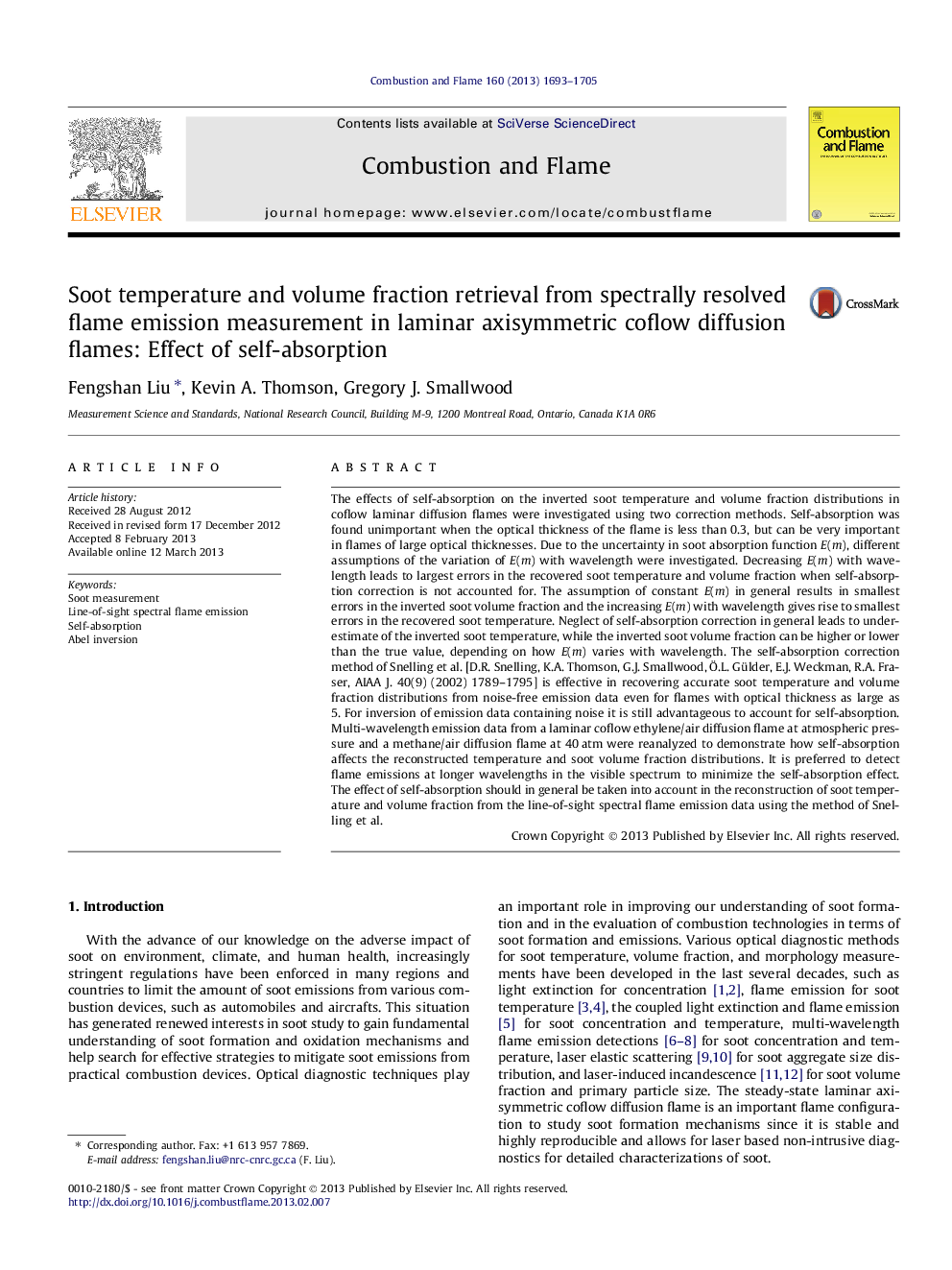| Article ID | Journal | Published Year | Pages | File Type |
|---|---|---|---|---|
| 166943 | Combustion and Flame | 2013 | 13 Pages |
The effects of self-absorption on the inverted soot temperature and volume fraction distributions in coflow laminar diffusion flames were investigated using two correction methods. Self-absorption was found unimportant when the optical thickness of the flame is less than 0.3, but can be very important in flames of large optical thicknesses. Due to the uncertainty in soot absorption function E(m), different assumptions of the variation of E(m) with wavelength were investigated. Decreasing E(m) with wavelength leads to largest errors in the recovered soot temperature and volume fraction when self-absorption correction is not accounted for. The assumption of constant E(m) in general results in smallest errors in the inverted soot volume fraction and the increasing E(m) with wavelength gives rise to smallest errors in the recovered soot temperature. Neglect of self-absorption correction in general leads to underestimate of the inverted soot temperature, while the inverted soot volume fraction can be higher or lower than the true value, depending on how E(m) varies with wavelength. The self-absorption correction method of Snelling et al. [D.R. Snelling, K.A. Thomson, G.J. Smallwood, Ö.L. Gülder, E.J. Weckman, R.A. Fraser, AIAA J. 40(9) (2002) 1789–1795] is effective in recovering accurate soot temperature and volume fraction distributions from noise-free emission data even for flames with optical thickness as large as 5. For inversion of emission data containing noise it is still advantageous to account for self-absorption. Multi-wavelength emission data from a laminar coflow ethylene/air diffusion flame at atmospheric pressure and a methane/air diffusion flame at 40 atm were reanalyzed to demonstrate how self-absorption affects the reconstructed temperature and soot volume fraction distributions. It is preferred to detect flame emissions at longer wavelengths in the visible spectrum to minimize the self-absorption effect. The effect of self-absorption should in general be taken into account in the reconstruction of soot temperature and volume fraction from the line-of-sight spectral flame emission data using the method of Snelling et al.
